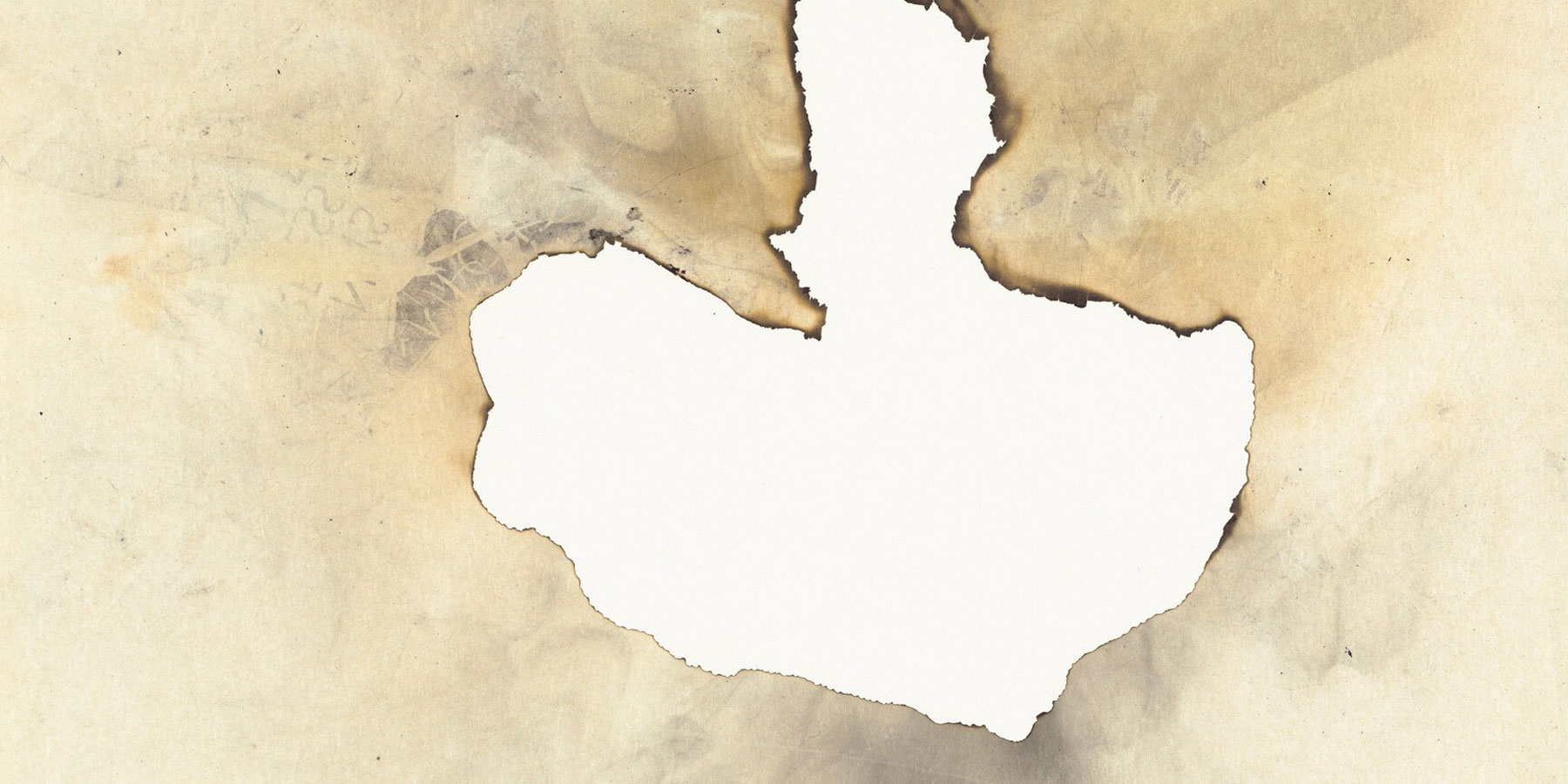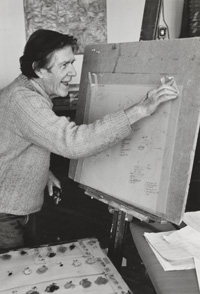The Changes and Disappearances series is Cage’s most complicated print project. Every mark, color, and image resulted from questions answered by numerous chance operations. Cage recorded every result on a score devoted to each print. He then created maps, or printing guides, by tracing the placement of each plate and annotating the tracings with every mark, line, image, and color to be used. Changes and Disappearances 32 was printed using thirty-six unique plates and required eleven maps (Cage is working on one in the photograph at left). The print is composed of eighty-five inked plate edges and 177 inked marks for a total of 262 distinct colored lines and shapes. If this sounds complicated, it’s because it is.
Banner image: Detail, John Cage, Eninka 29, 1986, burned, smoked, and branded gampi mounted to paper, National Gallery of Art, Washington, Gift of Crown Point Press, 1996, © John Cage Trust














